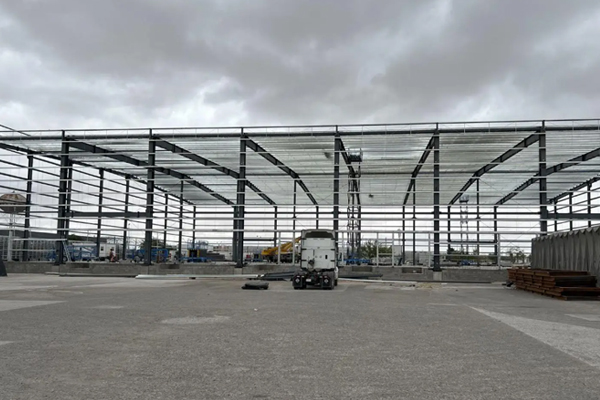News
User Choice: Site Selection Strategy for Mexican Factory Establishment
When setting up a factory in Mexico, site selection is a crucial decision that directly affects production efficiency, transportation costs, labor supply, and overall operating costs. When choosing the location of a factory in Mexico, users need to consider multiple factors to ensure that the site selection is conducive to the long-term development of the company. Here are several key site selection strategies:
1. Transportation and logistics convenience
Considerations:
Transportation infrastructure: Mexico's transportation system is one of the most important factors in factory site selection. Choosing areas close to major transportation routes, especially ports, railways, and highways, can help reduce transportation costs and improve logistics efficiency.
Close to the main market: If the main market is located in other important areas within the United States or Mexico, you can choose a location close to the northern border or important consumer markets to reduce delivery time and transportation costs.
Suggestion:
Priority should be given to areas close to major ports such as Altamira Port, Veracruz Port, and the US border for efficient import and export.
Ensuring good road, railway, and airport connectivity in the selected location is crucial, especially for the transportation of raw materials and product distribution.
2. Labor supply and cost
Considerations:
Labor market: There are significant differences in labor supply across Mexico, with some regions having high-quality and relatively low-cost labor. For example, labor in the central and southern regions of Mexico is relatively cheap and suitable for labor-intensive production.
Skill matching: The labor force in certain regions has specific skills that are suitable for the production needs of certain industries. Choosing a labor market with relevant skills can improve the production efficiency of factories.
Suggestion:
Choose regions with sufficient labor supply and low costs, especially cities or economic zones suitable for industrial production.
Conduct market research before site selection to understand the labor skill level and labor market trends in the target area.
3. Cost effectiveness and tax incentives
Considerations:
Local tax policies: There are differences in tax policies among different states and regions in Mexico. Some regions offer special tax incentives and subsidies to attract foreign investment.
Land and rental costs: The cost of land and industrial land cannot be ignored when selecting a site. Special economic zones and industrial parks usually offer relatively favorable land prices.
Suggestion:
Choose states and regions with tax incentives, especially in areas close to manufacturing concentration, such as Juarez, Tamaulipas, and Nuevo Le ó n, which typically have tax incentives to attract foreign investment.
Evaluate the long-term development cost of the factory, choose land with high cost-effectiveness, and avoid high land rent or purchase costs.
4. Environmental and social factors
Considerations:
Environmental regulations: Environmental regulations and enforcement vary in different regions. When selecting a site, consideration should be given to whether it can meet environmental requirements and reduce the cost of environmental compliance.
Community acceptance: The acceptance of factory location in the local community also needs to be considered. Close relationships with local governments and communities can ensure the smooth operation of the company's business and receive local support.
Suggestion:
Ensure that the site meets Mexico's environmental standards and avoids legal risks in the future due to environmental issues.
When selecting a site, consider good relationships with the local community, and if necessary, cooperate with the local government to obtain support such as land use and construction permits.
5. Government support and policies
Considerations:
Government incentive measures: In order to attract foreign investment, the Mexican government has introduced a series of policy incentives, such as the "Manufacturing Development Zone" (IMMEX Plan), which provides tax breaks, tariff reductions, and other benefits.
Industrial parks and economic zones: Mexico has multiple industrial parks and economic zones, and many factories choose these areas to obtain policy support and infrastructure convenience.
Suggestion:
Priority should be given to areas located in special economic zones or industrial parks, which typically offer more favorable policy support such as tax-free periods and duty-free import of equipment.
Understand and utilize various incentive measures provided by the Mexican government, especially preferential policies for foreign-funded enterprises.
6. Market demand and industry clustering effect
Considerations:
Industry clustering effect: Mexico has multiple industrial clusters, and when selecting a location, consideration should be given to whether the existing industrial chain advantages can be utilized. For example, industries such as electronics, automotive, and food processing have strong industrial cluster effects in specific regions and can share resources and information.
Market proximity: Choosing regions closer to the target market can help save logistics costs and also enable faster response to changes in market demand.
Suggestion:
Choose industry clusters (such as Nuevo Le ó n, Jalisco, etc.) to enjoy the advantages of resource sharing, labor supply, and professional talent in the upstream and downstream of the industrial chain.
By analyzing geographical location, select regions that are closer to the target market demand to ensure the flexibility of the supply chain and market response speed.
summary
The choice of site selection strategy is crucial when setting up factories in Mexico. Users need to comprehensively consider factors such as transportation convenience, labor supply, cost-effectiveness, tax incentives, government policies, and market demand. By selecting factory locations reasonably, production costs can be reduced, operational efficiency can be improved, and the long-term success of the enterprise in the Mexican market can be ensured.
Next:None





